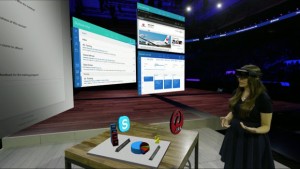





Besides the fact you can’t say much negative about Intel, you can admit the company’s PC growth isn’t what it used to be, and it’s probably because, unlike most everyone else in the biz, Intel hasn’t gone that far beyond simple computing. With VR, Intel isn’t going along with the pack the way it (more or less) has with its wearables, IoT devices, and other projects over the years. RealSense alone is refreshing to see being used. The 3D camera technology appears to be at its best, after existing for years and not quite finding its niche in otherwise promising devices. Maybe this is it, maybe Intel’s very own VR headset, which doesn’t need wires, controllers, or tedious installation and setup, will set a new standard in the role of merged reality. Now, Project Alloy isn’t ready for consumers yet, but it’s already a highly anticipated product. We’ll be patiently waiting until its release in late 2017.

 Laptop & Tablet Parts
Laptop & Tablet Parts




















